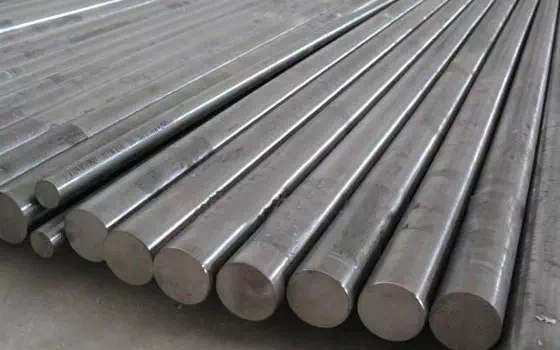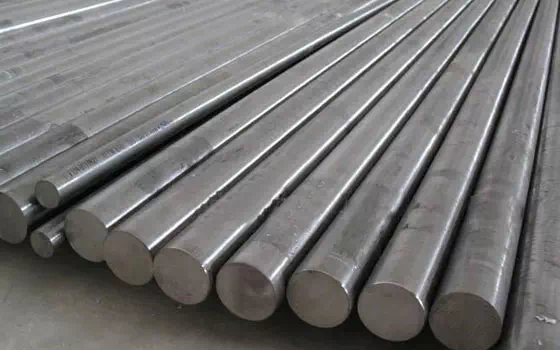Welcome to Zhishang Steel Co., Ltd.
TEL: (Gavin) +86-15665898999 | Email : info@zhishangsteel.com
Location:Home>>News>>Company News » Low alloy structural steel

Low alloy structural steel refers to alloy structural steel with a total alloy composition of less than 5%. The carbon content of this steel is similar to that of low-carbon steel, and it is mainly strengthened by a small amount of alloying elements to improve toughness and weldability. Its strength is much higher than that of carbon steel of the same carbon respect. Widely used in pressure vessels, chemical equipment, boilers, Bridges, vehicles, ships and large steel structures. Alloy elements manganese, silicon, molybdenum inch to cause solid solution strengthening. Vanadium and niobium can refine grain size and improve toughness. Molybdenum can play a role in improving hardenability, promoting the acquisition of bainite structure, but also improve the thermal strength.
According to the national standard (GB1591-1994), China's low alloy structural steel has a total of 5 grades, the added elements are mainly manganese, silicon, vanadium, titanium, aluminum, chromium, nickel and rare earth elements. The representation of its brand is composed of three parts: the yield point letter Q, the yield point value, and the quality grade (A, B, C, D, and E five grades). It is divided into five grades, which are expressed as follows: Yield point grade - Quality grade. Yield point rating: Q295, Q345, Q390, Q420, Q460.

1. good comprehensive mechanical properties. Ordinary low-alloy structural steel should first have a high yield limit, but because of the complexity of its working conditions, it should also have good comprehensive mechanical properties. For example, it can withstand various stresses in use (such as temperature difference stress, stress caused by alternating fatigue load, etc.), and can withstand shearing, cold bending, welding and other processing processes in the manufacturing process, as well as the aging brittleness that may result from it.
2. good process performance. Ordinary low alloy steel should have good processing and forming properties, and use ordinary methods such as cutting, stamping, hot bending and welding to manufacture good quality finished products. For boilers, pressure vessels, steel structures, etc., welding methods are generally used, so the steel should have good flame cutting performance and welding performance, the performance change of the heat affected zone near the weld is small, the weld and its nearby area will not crack, and the comprehensive mechanical properties of the welded joint should not be lower than (or rarely lower than) the base material. In addition, the steel is also required to have good cold stamping performance.
3. good corrosion resistance. Since the strength of ordinary low-alloy steel is much higher than that of carbon steel, the wall thickness of pressure vessels and steel structures manufactured with it is much smaller than that of carbon steel, so the loss rate caused by atmospheric corrosion (especially Marine atmospheric corrosion) must be improved accordingly, so that it has good resistance to corrosion under various atmospheric conditions. Therefore, the corrosion resistance test of steel should be carried out at the site of use in addition to the laboratory. Of course, the adoption of appropriate external anti-corrosion technology is essential for carbon steel, low alloy steel and other materials.
The common low alloy steels widely used in pressure vessels are mostly ferritic-pearlite structures, which are hot-rolled or normalized to obtain the final properties, and their structures accept the balanced structure of steel. The main alloying element in steel is carbon, and increasing the carbon content can increase the amount of pearlite, so that the yield limit and strength limit can be increased. However, there is a certain limit to improving the carbon content, because the increase of the carbon content will affect the welding performance and other properties of the steel (such as stamping performance, etc.), so that the brittle transition temperature is increased and the cold brittleness is deteriorated. Therefore, the carbon content of low-alloy structural steel for pressure vessels is generally limited to less than 0.20%. In the case of limited carbon content, the improvement of the strength of this type of steel mainly depends on the addition of a small amount and a variety of alloying elements to achieve (the total amount of addition does not exceed 5%, generally less than 3%, mostly 1% to 2%). For the low alloy structural steel with ferrite-pearlite structure, the influence of alloying elements on its strength is mainly as follows:① the homolytic strengthening of ferrite; ② Increase the relative amount of pearlite; ③ Control grain size; ④ Influence the dispersion of pearlite; ⑤ Precipitation hardening.
Manganese, silicon two elements can be solidly dissolved in ferrite, there is a significant solution strengthening effect, other chromium, nickel, copper, cobalt and so on. Considering the cost saving and resource conditions, manganese and silicon are commonly used alloying elements in ordinary low-alloy steels in China. Under low-carbon conditions, when the manganese content is below 1.8%, it can not only improve the strength of steel, but still maintain high plasticity and toughness. In addition, manganese also has the effect of expanding the austenitic zone, so that the eutectoid point of the steel moves to the lower left, so that there is a larger number of pearlite structures with finer organization, and the strength of the steel is correspondingly improved.
The amount of silicon added to low alloy structural steel is generally within 0.2% to 1.7%, which will reduce the toughness after exceeding. Chromium and nickel are also ferritic solid solution strengthening elements, nickel has a good effect on improving low temperature toughness; The effect of phosphorus strengthening ferrite is significant, but due to the increase of cold brittleness, the maximum content should be limited to 0.15% when used, and the total content of phosphorus and carbon should be limited to less than 0.25%.
The national standard (Low alloy high strength structural steel)(GB 1591) has made corresponding provisions on the chemical composition and mechanical properties of each grade of low alloy high strength structural steel. Due to the strengthening effect of alloying elements, low alloy structural steel not only has higher strength, but also has better plasticity, toughness and weldability. The comprehensive performance of Q345 steel is better, and it is the commonly used grade of steel structure, and Q390 is also the recommended grade. Compared with carbon structural steel Q235, low-alloy high-strength structural steel can save 20% to 30% of steel, and has good dynamic load and fatigue resistance. Low alloy structural steel is mainly used for rolling various types of steel, steel plate, steel pipe and steel bar, widely used in steel structure and reinforced concrete structure, especially suitable for all kinds of heavy structures, long-span structures, high-rise structures and bridge engineering, bearing dynamic load and impact load structure.
Low alloy structural steel is a low-carbon structural steel, the content of alloying elements is less, generally less than 3%, mainly plays the role of refining grains and improving strength. The strength of this type of steel is significantly higher than that of carbon steel with the same carbon content, so it is often called low-alloy high-strength steel. It also has good toughness, plasticity and good weldability and corrosion resistance. Originally used in Bridges, vehicles and ships and other industries, its application scope has expanded to boilers, high-pressure vessels, oil pipes, large steel structures and automobiles, tractors, earth-moving machinery and other products.

Zhishang Steel has always been a pioneer in custom steel and special supplies, and has been recognized for its efforts in enhancing work efficiency and product quality. In addition to ISO9001:2015 certification, we also adhere to strict quality policies and proprietary procedures. If you have any questions, please contact us to provide the best type of product solution for your pre-painted, coil coating metal process, we will closely support after-sales service to ensure that your subsequent problems can be solved in a timely manner, if you have any questions, please send email to info@zhishangsteel.com, we look forward to serving you.

Zhishang Steel, specializing in domestic steel products trade, warehousing, processing and other services. The team has four service teams: Shandong Zhishang Steel Co., LTD., Shandong Zhiyiheng Trading Co., LTD., Tai 'an Zhishang Economic and Trade Co., LTD., Shandong Zhishang Steel Structure Co., LTD. Mainly engaged in steel coil, coated, stee···